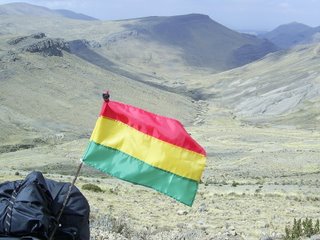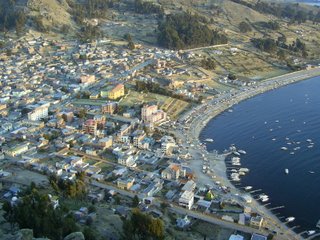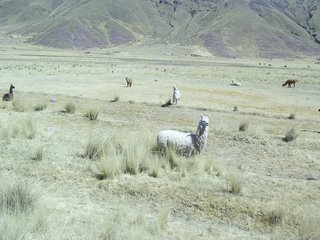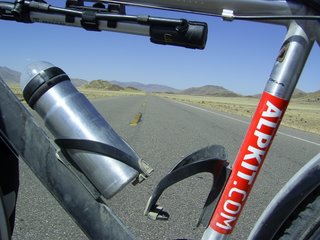IMPORTANT. Route Change.
Most people reading this probably don´t really want to know where we are but this time we want you to know, just incase we get lost. We are now in Oruro and will be leaving tomorrow morning heading forever south.
We originally intended to travel through Bolivia via Cochabamba and Potosi visiting the Cerro Rico mine along the way and then continuing south on the Altiplano to Villazon, Argentina juicy steaks and red wine.
But after Cuzco, Puno, Titicaca, Copacabana and La Paz we both feel the need to get off the beaten track a little and do some real getting lost. So with the aid of our newly aquired military maps we´ve decided on a great route across the Salar de Uyuni and through the volcanic SW of Bolivia full of strangely coloured lagoons to Chile and the Atacama desert.
We estimate it´ll take us 10 - 12 days actual cycling but depending on roads this could be 16 - 17 days. We will update again when we arrive in Chile at San Pedro de Atacama somewhere around September 7th - 10th.
The route intended is as follows.
Oruro - Challapata 92km (24th August)
Challapata - Santuario de Quilcas 60km
S de Q - A Weird Forest (don´t understand the legend on the map as it´s in Spanish) 67km
Weird Forest - Tuhua and the northern edge of the Salar de Uyuni 68km
Crossing the Salar in a SW/SSW direction towards Isla Pescado 30km
Continuing across the Salar from Isla Pescado SSW - Charagua (land) 76km
Charagua - S following telegraph line turning right after 9km, left after 9km heading South (Chiguana) 400m climb.
Chiguana to Laguna Hedionda 71km
Laguna Hedionda - Laguna Colorado 90km
Laguna Colorado - Laguna Verde & Chile 100km
San Pedro de Atacama is probably about another 80 - 100km, but it could be as much as 1000km as I haven´t checked the map.
Bye for now.
R&S
We originally intended to travel through Bolivia via Cochabamba and Potosi visiting the Cerro Rico mine along the way and then continuing south on the Altiplano to Villazon, Argentina juicy steaks and red wine.
But after Cuzco, Puno, Titicaca, Copacabana and La Paz we both feel the need to get off the beaten track a little and do some real getting lost. So with the aid of our newly aquired military maps we´ve decided on a great route across the Salar de Uyuni and through the volcanic SW of Bolivia full of strangely coloured lagoons to Chile and the Atacama desert.
We estimate it´ll take us 10 - 12 days actual cycling but depending on roads this could be 16 - 17 days. We will update again when we arrive in Chile at San Pedro de Atacama somewhere around September 7th - 10th.
The route intended is as follows.
Oruro - Challapata 92km (24th August)
Challapata - Santuario de Quilcas 60km
S de Q - A Weird Forest (don´t understand the legend on the map as it´s in Spanish) 67km
Weird Forest - Tuhua and the northern edge of the Salar de Uyuni 68km
Crossing the Salar in a SW/SSW direction towards Isla Pescado 30km
Continuing across the Salar from Isla Pescado SSW - Charagua (land) 76km
Charagua - S following telegraph line turning right after 9km, left after 9km heading South (Chiguana) 400m climb.
Chiguana to Laguna Hedionda 71km
Laguna Hedionda - Laguna Colorado 90km
Laguna Colorado - Laguna Verde & Chile 100km
San Pedro de Atacama is probably about another 80 - 100km, but it could be as much as 1000km as I haven´t checked the map.
Bye for now.
R&S








 The sun setting over Titicaca.
The sun setting over Titicaca.






























